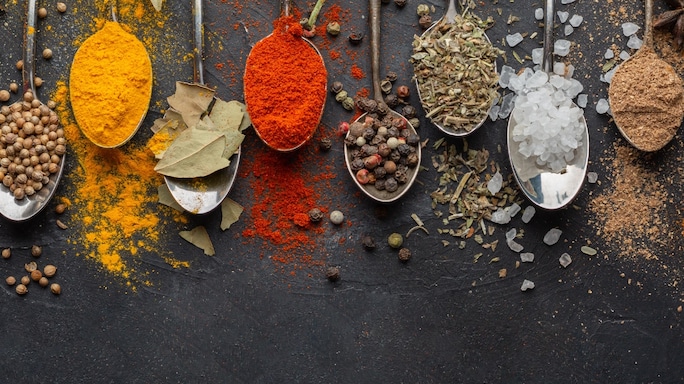- HOME
- /
- Culturescape
- /
- Book Extract
- /
Food and Family: Mary Kom's Walk Down Memory Lane
An excerpt from Sudha Menon's Recipes for Life

I was born in Kangathei, a tiny village around 60 km from Imphal. My parents were landless labourers and the food we ate at home was very simple, modest fare. But even so, I sometimes find myself thinking of those meals with my family, in our tiny mud house with its thatched roof.
My parents worked hard in the fields of landowners in order to earn a living and feed their four children. Since I was the eldest, I began working in the fields when I was just a little girl so that I could help them support the family.
One of my favourite things to eat as a child was kangshoi or chamthong (in Manipuri, we just prefix the name of the vegetable that is used in the dish). This was made of fresh mustard leaves and potatoes from our garden or the nearby fields, stewed with fish that came from the local Loktak lake, all boiled together and flavoured with sliced onions, cloves, salt, garlic, maroi (winter leeks) and a bit of ginger. We had the piping hot stew with rice, and I still remember its aroma and the distinct flavours from the herbs that Anu, my mother, tossed into the bubbling pot.
Like other village homes, we too had a patch of garden where my parents grew an array of vegetables—mustard, cabbage, potatoes, tomatoes, garlic, ginger, peas, beans, brinjal, ladies’ finger, coriander, and a variety of indigenous herbs such as maroi napaakpi (hooker chives), maroi naakuppi (Chinese chives). Since we were poor, my parents also sold the fresh vegetables in the local market to make both ends meet.

I remember looking forward to our Sunday lunches. City folks will probably never know the value or concept of eating local and seasonal, but in the village, we ate what the earth produced during the changing seasons. This meant the taste and flavour of the food was incomparable. After a week of relentless hard work in the fields, my parents and the four of us would sit down to enjoy a humble but delicious fare: steamed rice, which was a must, along with boot—a steaming hot stew bursting with the flavours of fresh vegetables, dried fish and meat. Meat was a rarity—we couldn’t afford it—and would be reserved for special meals. My absolute favourite from the Sunday meal was shingju, a mixture of several greens such as shingju leaves, chopped cabbage, banana or lotus stem, banana flowers, shallots, aromatic roots, herbs such as coriander, ginger, chilli, and fermented fish. Sometimes we ate this as a snack too, and it was very satisfying after a day at school or in the fields.
There are other heart-warming memories of my childhood. Life was hard but also a happy time spent with my siblings. Often, I would be in the kitchen helping Anu with the cooking so that I could lighten her burden. I loved to hang around the kitchen when she made ooti, a traditional dish made with local spices, dried peas, fresh greens and baking soda.
At home we replaced the peas with rice, added bamboo shoots, greens and baking soda. Another of my favourites was a dish of rice, steamed with fresh, soft maize. Though this was considered poor people’s food, the taste was matchless. It still takes me back to my childhood and brings back memories of waiting expectantly for Anu to serve this for lunch or dinner! My mother also made spicy chutneys using indigenous greens and herbs, some of them tart and tangy, to which she added fermented fish and served with our meals. Ngari and ngathu were the two fermented fish varieties we used a lot in our home. Since our family had very limited means, there was not much Anu could do to give us fancy food, and yet, she did manage the occasional treat, using her resourcefulness to prepare something that would have us slurping and asking for more! One of my favourite snacks from childhood was tan, a Manipuri breakfast staple, very much like a puri, that she made with sticky rice flour. I remember it went very well with piping hot black tea. Sometimes she served it with a spicy aloo kangmet, potatoes being a family favourite.
I left home in 2014 and shifted to Imphal, but I still miss the simplicity of life back in my village. When I look back, I realise how lucky we were to be able to eat fresh, organic produce, grown in our backyard. Sometimes I miss tending to that patch of garden and picking fresh veggies for our meal. I learnt how to make many of the traditional dishes by being with Anu in the kitchen, and I am happy I am able to cook those meals for my family—husband and three sons— today. What makes me happier is that they too love the simplicity of the food from our village and our culture.
Excerpted with permission from Recipes for Life by Sudha Menon, published by Penguin India.
If you want to read more about the author's interview, click here.






